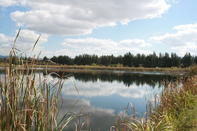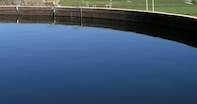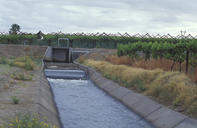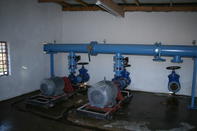Water Sources
All water reaches the surface of the earth through different kinds of precipitation like snow, rain, hail, sleet or mist.

There are two main sources of water we use for agriculture and domestic consumption purposes, namely surface water that is channelled along the surface of the earth in streams and rivers to the point of use and subterranean or underground water that travels along aquifers and fissures in the earth to where it again reaches the surface naturally or by human intervention by wells or boreholes.
Water Storage

Water is stored in dams and from there pumped or if gradient allows used under gravitation for irrigating lands. Losses through evaporation can be substantial if dams have large surface areas.
Underground water is either pumped up from hundreds of metres below the surface into dams and from there used for irrigation or in many cases pumped directly onto the crops and fields from the aquifers below the surface.
Underground water can also reach the surface and form springs. In some cases natural lakes are formed from springs or where rivers spread out over flatter terrain, where the topography allows.
Water Channelling

Pumping

Most pumps for irrigation purposes are driven by electricity, petrol or diesel. There are two main types of pumps - centrifugal pumps and displacement pumps.
Displacement pumps work by water entering the pump chamber through the entrance and then displacing the water in the chamber by forcing a piston or diaphragm into the chamber by force, which then pressurises the water from the chamber via the exit. The water in the chamber is controlled by two opposing non-return valves.
The force used can be generated by many forms of power like steam, air, diesel and gasoline or as in the case of the hydraulic ram pump by the kinetic energy created by the water itself. For irrigation purposes mainly centrifugal pumps are used.
A centrifugal pump has an impeller with cups that receives the water at its centre and spins it around inside the chamber and through centrifugal force is moved from the centre of the impeller outwards towards its outer edge and is then channelled out via the moulded outlet of the pump casing taking or “flinging” the water out into the outlet pipe.